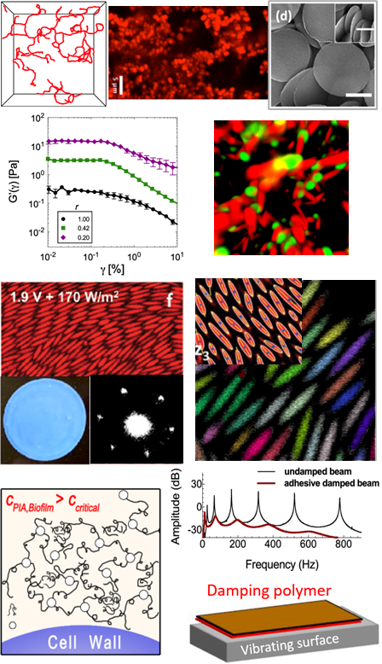 | Chemical Engineering
| Chemical Engineering
“Soft matter – ubiquitous in natural and industrial systems – are interesting materials that constantly challenge our fundamental understanding.”
Understanding the correlation between the micro-scale structural properties and the macro-scale rheological and optical properties of soft materials (e.g., colloidal gels, polymer solutions, adhesives, biopolymers etc.) is the broad theme of our research group. We seek to apply these understanding to develop ‘inverse’ design paradigms for realizing soft materials with tailored functional properties.
1. Colloidal gels of tunable elasticity: Aggregating particles form a remarkable fractal like network that exhibits a solid like rheology. We seek to discover modes for tuning the linear and non-linear elastic rheology of these materials.
2. Annealing anisotropic colloidal assemblies: Colloidal particle assemblies are sought for their brilliant structural coloration. Anisotropy in particle shape gives rise to richer color response. Yet, anisometric assemblies are prone to defects. We seek to develop techniques to anneal such crystal defects.
3. In situ physics of biofilm polymers: Biofilms are bio-soft materials made of bacterial cells embedded in an extracellular polymeric substance (EPS). I seek to fundamentally understand how the EPS polymers are surprisingly tailor made to suit the biofilm’s growth environment.
4. Rheological paradigm for vibration damping adhesives: Sticky polymers can interestingly damp vibrational amplitudes in substrates. We aim to develop rheological guidelines for producing polymers that can achieve target damping performances.

1. Beckwith, J.K., Ganesan, M., VanEpps, J.S., Kumar, A. and Solomon, M.J. “Rheology of Candida albicans fungal biofilms” Journal of Rheology 66, 683 – 697 (2022).
2.Kao, P.-K., Solomon, M.J.* and Ganesan, M.* “Microstructure and elasticity of dilute gels of colloidal discoids” Soft Matter 18, 1350 – 1363 (2022).
3. Milliman, Henry W; Ganesan, Mahesh. Multilayer constrained-layer damping, US Patent No. US 11,059,264 B2, July 13, 2021.